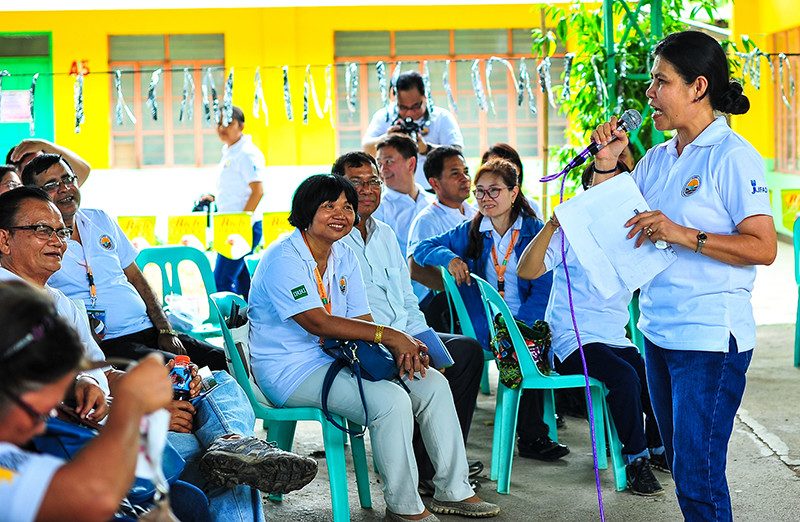
BULACAN, Philippines—Several farmers from San Ildefonso town recently (26 May) hosted a “field summit” with rice department heads and scientists from South and Southeast Asian countries to discuss agriculture-related topics, share knowledge, and exchange ideas. The summit was part of the 15th Annual Steering Committee Meeting of the Consortium for Unfavorable Rice Environments (CURE), an arm of the International Rice Research Institute (IRRI).
The farmers asked the experts questions about the production costs in their countries, potential solutions to low soil fertility, water scarcity, and other challenges related to rice farming. The experts, in turn, generously shared their knowledge, insights, and experiences.
“We want our Filipino farmers to be more efficient in their use of seed, fertilizer, and other inputs, so they will be able to compete like farmers from our neighboring countries,” said Dr. Jimmy Quilang, deputy executive director for research at the Philippine Rice Research Institute (PhilRice).
For example, the input costs of farmers in Vietnam, the world’s leading rice producer, are reportedly only USD 0.14 per kilogram of paddy compared with Filipino farmers who spend USD 0.26 per kilogram of paddy on inputs.
Quilang encouraged the San Ildefonso farmers to be more efficient in their rice production and hence they will be more competitive. He enumerated several techniques and tools to help reduce rice production costs. These include using the recommendations from a decision-support tool known as Rice Crop Manager, participating in the mechanization effort of the government to make rice less labor intensive, and using only 40 kilograms of seed per hectare when doing direct broadcasting or only 60 kilograms of seeds per hectare when transplanting.
During the last growing season, a farmer who grew inbred rice inside the PhilRice site in Nueva Ecija was able to get as much as 10 tons per hectare at an input cost of only USD 0.11 per kilogram, according to Quilang.
He also informed the farmers about the Palayabangan Challenge, which PhilRice launched in 2013. Taken from two local words together that mean “rice and pride,” Palayabangan literally challenges rice farmers to prove that rice farming can be a profitable enterprise.
Because water scarcity is often a problem, Dr. Nenette Desamero, a PhilRice scientist, recommended complementing existing water management options such as shallow or deepwater tubewells with rainwater harvesting systems. She said that rainwater catchment or harvesting systems may be another good option for farmers to invest in, especially when planting hybrid rice since the cost of hybrid varieties is usually higher and farmers cannot afford to lose their return on investment. A farmer who grew hybrid rice inside the PhilRice site, using the recommended systems, was able to harvest as many as 12 tons per hectare, although production costs were also higher.
Dr. Aurora Corales of PhilRice advised farmers to plant cash crops such as mungbean, bittergourd, and other vegetables that are easy to grow when water is limited. When water becomes more available, she encouraged farmers to raise freshwater tilapia in a rice-fish system.
“I’m thankful that we’ve all been able to come together in this activity,” said Mr. Ferdinand V. Marcos, president of the United San Ildefonso Farmer Families Vegetables and Grains Marketing Cooperative. “To my fellow members and even nonmembers of the cooperative, I hope we have learned many things. To our foreign guests, we’re grateful that you came here.”
The summit was jointly organized by IRRI, PhilRice, the Philippine Department of Agrarian Reform, and the local government unit of San Ildefonso, Bulacan.
Quilang thanked the farmers for hosting the guests and the foreign participants for answering the farmers’ questions. He encouraged CURE to sponsor more activities of the same kind in the future. He also said more research is needed immediately on diversification, cropping systems, and integration of other technologies into these systems.








